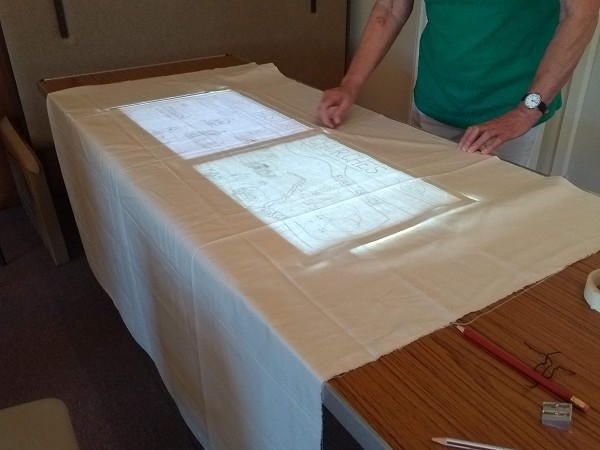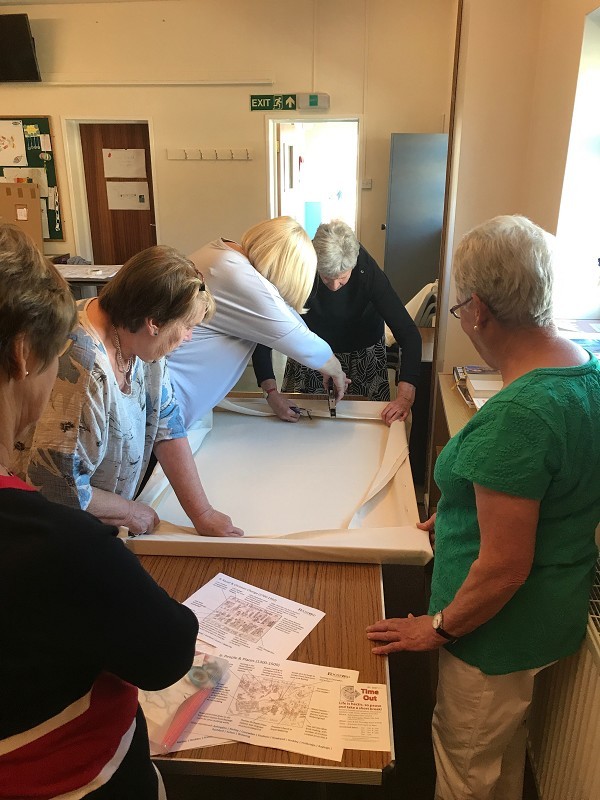Following receipt of the Heritage Fund grant, we could now get the project started. As each drawing was created, it was checked for historical accuracy (as far as is reasonably possible) and then finalised ready to translate into textile form. Each drawing had been produced either to full scale (25” x 35”) or in proportion.
These had to be copied so that 3 full size prints could be made – one to display on the wall at the workshops, one to trace onto the panel background and one to cut up to become part of the sewing kits.
Of course we needed people and materials to make things move at pace. Along with various material offcuts, RDC donated a bolt of calico that would form the backing for each panel. The word went out via social media and local groups, with over 60 people soon signed up to receive the regular email updates.
Materials and threads then started to emerge from people’s homes and groups, such that Sarah and Chris could start sorting into colours for the panels. But what colours to use? Each panel has had to be researched to ensure the right type of colours for that period or image have been used and also to make the colours ‘flow’ across each panel.
Guy from Phoenix Frames made us some 'working frames', so the calico was stretched and pinned ready to start.
|
Using light boxes to trace the outlines onto the calico |
Stretching the calico onto the working frame |
 |
 |
 |
 |